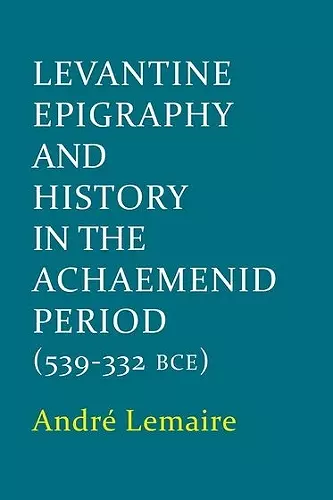Levantine Epigraphy and History in the Achaemenid Period (539-322 BCE)
Format:Hardback
Publisher:Oxford University Press
Published:12th Nov '15
Currently unavailable, and unfortunately no date known when it will be back

Inscriptions discovered since 1980 and fresh epigraph research have revealed much about the Archaeminid period in the Levant (533-332 BCE). André Lemaire concentrates on three areas where new data has shed light on the societies living in the largest empire that the world had known to that date.
Phoenicia played a vital political and economic role in the empire because Persian kings had to rely on the Phoenician navy in their wars against Greece and Egypt in the Eastern Mediterranean. Newly discovered inscriptions from Byblos, Sidon and Tyre, as well as the results of research into coins, have illuminated the chronology, history and extent of the Phoenician kingdoms, as well as their influence in Palestine.
New inscriptions have added to our knowledge of the Judean Diaspora in Babylonia, Egypt and Cyprus. The main indirect information about the Exiles previously available to us was in the book of Ezekiel. Now, epigraphic data has revealed not only many names of Exiles but how and where they lived and more about their relationship with Jerusalem.
The third region described is the Persian provinces of Samaria, Judaea and Idumaea, especially during the 4th century BCE. The publication of various, mainly Aramaic, contemporary inscriptions on papyri, ostraca, seals, seal-impressions and coins, sheds new light on the daily life and religion of these provinces. The insciptions help us to understand something of the chronology, society and culture of these three different provinces as well as several Biblical texts in their historical and economic contexts.
With over 90 inscriptions illustrated and fully transcribed, this book provides new insight into a period that has proved difficult to study.
ISBN: 9780197265895
Dimensions: 241mm x 166mm x 17mm
Weight: 508g
120 pages